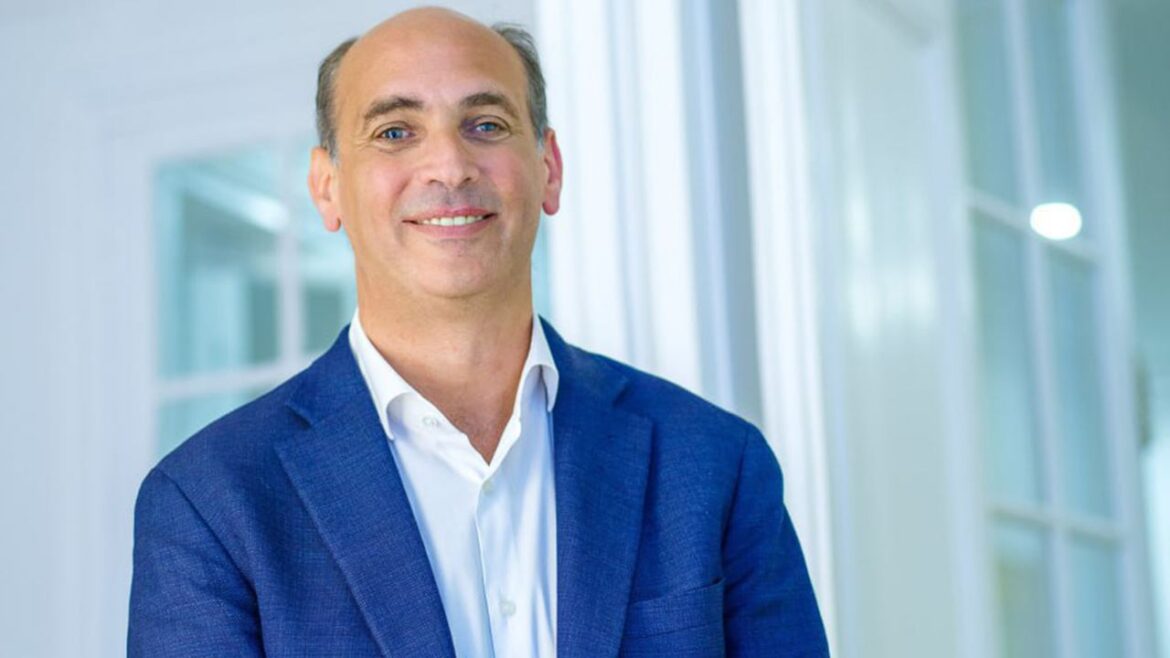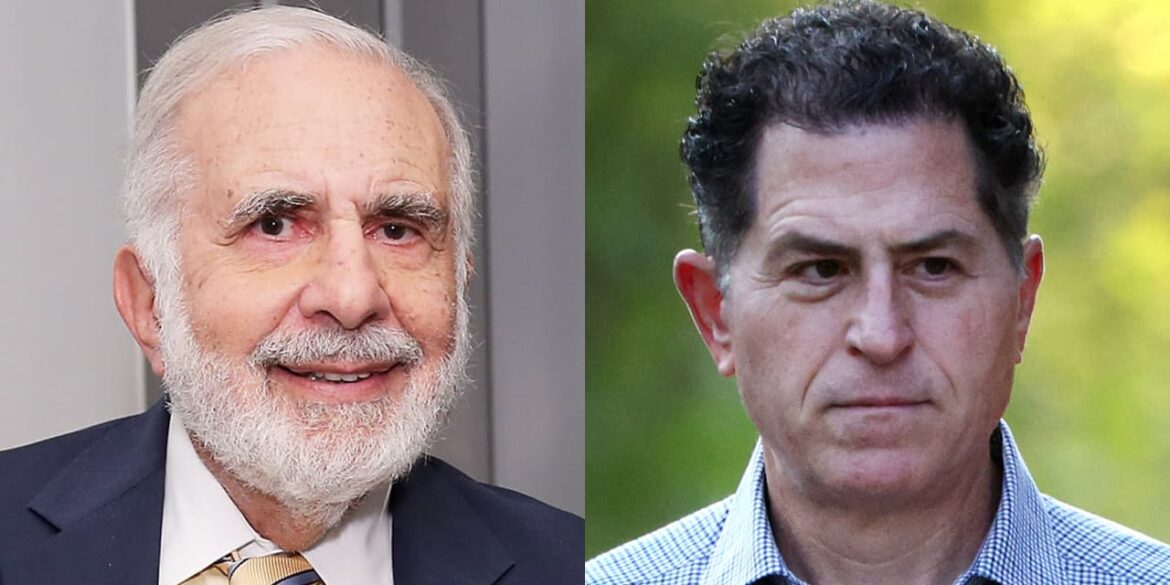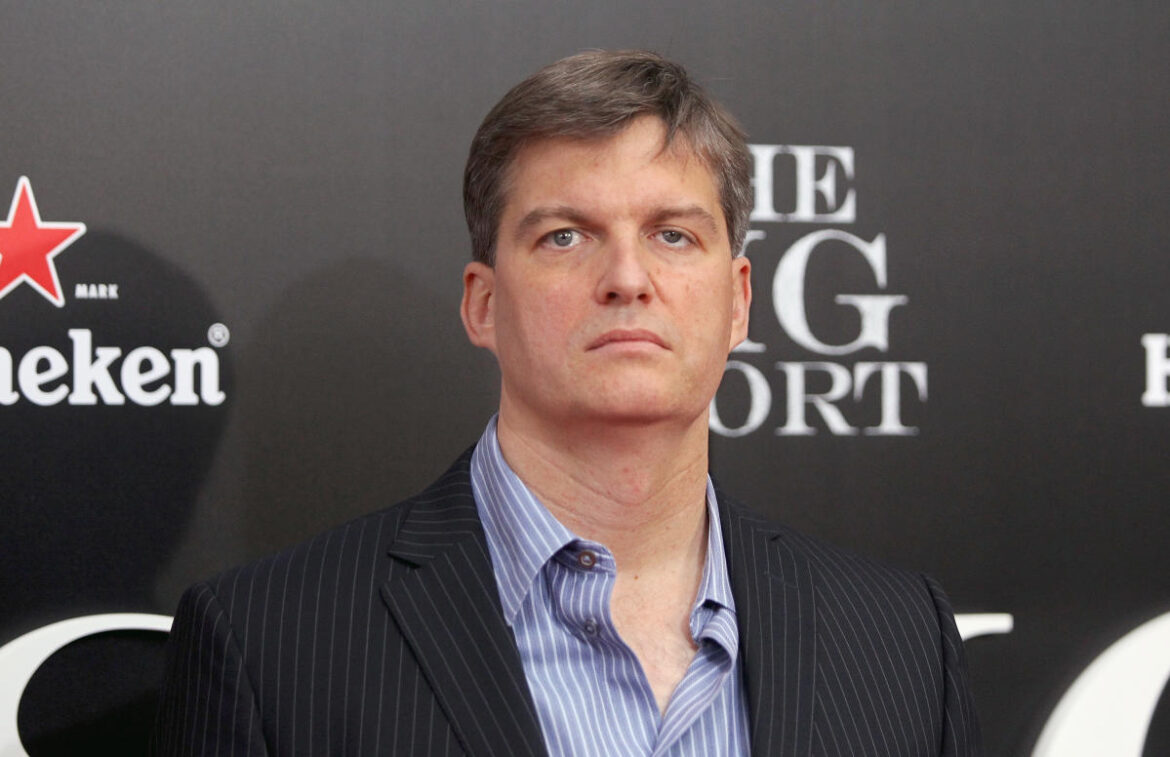 The blockchain and crypto industry has never stood still including during the prolonged lean period known as the crypto winter, asserted Michael Amar, co-founder of the Paris Blockchain Week Summit. Amar believes the resilience shown by market participants during this period demonstrates a new level of maturity in the industry. Engagement Between Startups and Developers […]
The blockchain and crypto industry has never stood still including during the prolonged lean period known as the crypto winter, asserted Michael Amar, co-founder of the Paris Blockchain Week Summit. Amar believes the resilience shown by market participants during this period demonstrates a new level of maturity in the industry. Engagement Between Startups and Developers […]
Source link
Michael
‘Big Short’ investor Michael Burry rang the recession alarm, bet against the S&P 500, and scooped up bargains in 2023
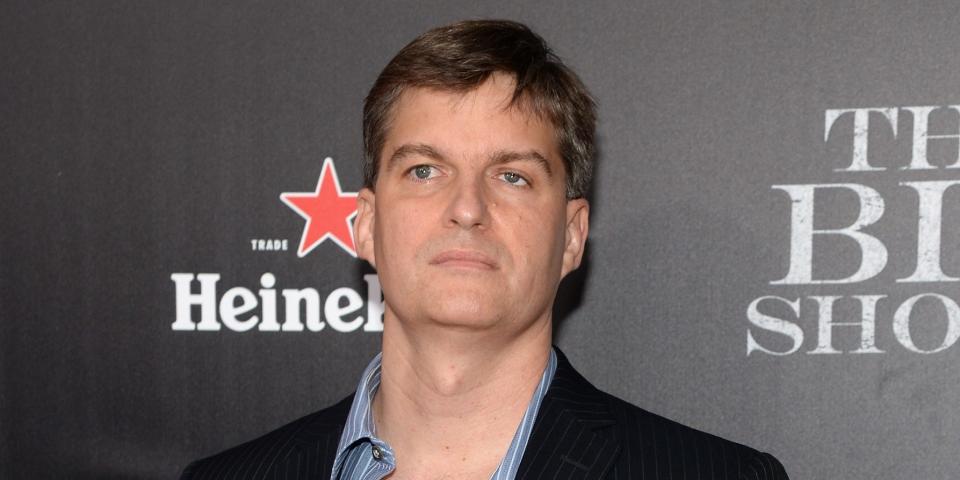
-
Michael Burry issued dire warnings, took short positions, and pounced on bargains in 2023.
-
The investor predicted inflation and recession, and bet against the S&P 500 and microchip stocks.
-
Here are “The Big Short” star’s three big highlights of the year.
Between his bleak forecasts for the stock market and economy, his bets against the S&P 500 and microchip stocks, and his bargain hunting during the regional-banking crisis, Michael Burry had an eventful 2023.
The investor is best known for predicting and profiting from the mid-2000s housing bubble, after his massive bet was immortalized in the book and movie “The Big Short.” He also placed eye-catching bets against Elon Musk’s Tesla and Cathie Wood’s flagship Ark fund in 2021, and bought into GameStop long before it became a meme stock.
Here are Burry’s three highlights of 2023:
1. Doom and gloom
Burry started the year in classic style with a slew of grim predictions.
“Inflation peaked. But it is not the last peak of this cycle,” he posted on X in early January. “We are likely to see CPI lower, possibly negative in 2H 2023, and the US in recession by any definition.”
“Fed will cut and government will stimulate,” he continued. “And we will have another inflation spike. It’s not hard.”
Burry proved to be right that inflation would drop by the second half of this year; it has fallen from over 9% at its peak last summer to below 4% in recent months. However, a recession hasn’t materialized so far with US GDP growing by an annualized 5.2% in the third quarter. Inflation hasn’t resurged either, and the Federal Reserve is yet to cut interest rates after raising them to 5% to curb price growth.
The Scion Asset Management boss shared a few worrying charts over the next few weeks, including one comparing the S&P 500’s trajectory at the time to its ill-fated rally during the dot-com crash in the early 2000s.
He sent alarm bells ringing at the end of January when he posted a single word: “Sell.” Burry has been cautioning investors about the current market for a few years now; he bemoaned the “greatest speculative bubble of all time in all things” and predicted the “mother of all crashes” in 2021.
He also issued a warning in February to Bed, Bath & Beyond shareholders that the stock was headed for disaster. The homewares retailer filed for bankruptcy in April, and its shares were delisted from the Nasdaq in May.
Burry appeared to backtrack on his advice to cash out in a March post that read, “I was wrong to say sell.” However, he seemed to strike a mocking tone in a follow-up tweet: “Going back to the 1920s, there has been no BTFD generation like you. Congratulations,” he wrote, using the acronym for “buy the f****** dip.”
2. Bank woes and bargains
Burry weighed in during the regional-banking crisis in March, which saw Silicon Valley Bank, Signature Bank, and Silvergate Capital all fail as customers yanked their deposits. He compared the lenders’ mistakes to the errors made during the dot-com and housing bubbles.
“2000, 2008, 2023, it is always the same,” he posted. “People full of hubris and greed take stupid risks, and fail.”
Even so, Burry correctly predicted the chaos would end swiftly and didn’t pose a serious threat to the wider economy.
The value investor capitalized on market jitters in the first quarter, buying up shares of beaten-down banks including First Republic and PacWest. He spotted other bargains in the second quarter, when he purchased a bunch of energy, commodity, and shipping stocks including Coterra Energy and Sibanye Stillwater.
Burry boosted a few of those positions in the third quarter, including Euronav and Star Bulk Carriers. Yet he also slashed his stock portfolio from 33 holdings to 13 in the period, more than halving its total value (excluding options) from $111 million to $44 million.
3. Short stuff
Burry’s most striking moves of 2023 were on the short side. He purchased bearish put options on two exchange-traded funds that respectively tracked the S&P 500 and Nasdaq-100 in the second quarter. Those positions represented wagers with a notional value of $1.6 billion against those stock indices.
“That is a big position even for a big fund,” Gerry Fowler, UBS’ head of European equity strategy and global derivative strategy, told Business Insider at the time. Even if Burry only paid a tiny fraction of $1.6 billion for the hedges, “the exposure he is using shows a significant amount of leverage,” Fowler said.
The Scion chief made waves again with his third-quarter maneuvers. While he closed out his previous shorts, he bought puts on 100,000 shares of Blackrock’s iShares Semiconductor ETF with a notional value of $47 million. The ETF counts Nvidia, the graphics-chip stock that has tripled in value this year on the back of AI excitement, as its third-biggest holding.
Portfolio disclosures don’t show the days on which trades were made or closed out, but neither of Burry’s bets appears to have paid off. The S&P 500 and Nasdaq both rose between the start of April and the end of September, and the microchip ETF has climbed to a near-record high.
Will Burry speak up again?
Burry rarely talks to the press and hasn’t posted on X since April, meaning there’s almost no context around his moves this year. His followers will be hoping he resumes commenting on markets and the economy in the new year — not just because his posts are frequently colorful, insightful, and prophetic, but also because the current outlook for investors is deeply uncertain.
Read the original article on Business Insider
MicroStrategy’s Michael Saylor Calls Bitcoin An Institutional-Grade Asset Destined For $1 Million
Microstrategy’s Executive Chairman and Co-founder, Michael Saylor, is one who always uses every opportunity to heap praises on the flagship cryptocurrency Bitcoin. Once again, he didn’t disappoint, as BTC was the center of discussion in his latest media appearance.
Bitcoin Going To $1 Million
In an interview with CNBC, Michael Saylor stated that Bitcoin is going to $1 million if it isn’t going to “zero.” He noted that the “big question” in relation to BTC’s potential was whether or not the digital asset was legitimate. According to him, if Bitcoin is a “legitimate institutional asset,” then everybody is “under-allocated” to it.
His comment about Bitcoin possibly hitting $1 million seems to stem from his belief that Bitcoin as an asset is still untapped, as he expects many institutional players to get in on the crypto token. He noted how 99.9% of the world’s capital is currently tied to other global assets like bonds, real estate, stocks, and precious metals. However, expects that to change soon enough.
That change, he believes, will stem from education about digital assets. From that, Saylor says more and more people will realize that they ought to be allocating more and more of their capital to digital assets. Interestingly, he labeled BTC as a “digital transformation of capital,” alluding to its disruptive nature.
These institutional players could well be allocating more of their capital to BTC as early as 2024. The new rule by the Financial Accounting Standards Board (FASB) recently opened the door for firms to include cryptocurrencies like Bitcoin on their balance sheet. As such, we could see other tech firms adopt Microstrategy’s “Bitcoin Strategy.”
BTC price reclaims $43,000 | Source: BTCUSD on Tradingview.com
BTC Is Going Foward In 2024
Saylor also discussed several macro factors that he considers bullish for Bitcoin going into the new year. These factors include the potential approval of a Spot Bitcoin ETF, the loosening of monetary policies, and wider BTC adoption in countries suffering from inflation.
He also alluded to the BTC Halving event, which he believes is also bullish for the Bitcoin ecosystem. All these factors form a “confluence of very bullish milestones,” which Saylor projects are going to happen over the next six months.
Saylor will undoubtedly be fulfilled when his company’s Bitcoin strategy has panned out as Microstarategy is currently in profit with its Bitcoin acquisitions. The company’s stocks are also flying high as it recently hit a 2-year high, thanks in part to its BTC exposure.
At the time of writing, BTC is currently trading at around $43,000, up over 4% in the last 24 hours according to data from CoinMarketCap.
Featured image from Yahoo Finance, chart from Tradingview.com
Disclaimer: The article is provided for educational purposes only. It does not represent the opinions of NewsBTC on whether to buy, sell or hold any investments and naturally investing carries risks. You are advised to conduct your own research before making any investment decisions. Use information provided on this website entirely at your own risk.
Anotherblock to Release Michael Jackson’s First-ever Studio Demo on Blockchain
Per the announcement made by Anotherblock, the project will have two packages – the open edition and the limited edition. I
Swedish Web3 music startup Anotherblock will release the first Michael Jackson’s studio demo as a digital vinyl on a blockchain-based platform. Jackson and his brothers recorded the track titled Big Boy (One-Derful Version) in July 1967. The song went on to become the first for the Jackson 5.
Company CEO and co-founder Michel Traore expressed his thrill at his involvement in retelling the story of the early days of Jackson 5. Additionally, he highlighted it took the team about six months to piece everything together. Traore is eager to observe what the audience’s response is to music in this format.
“Doing this drop as a digital vinyl on-chain makes it possible to build stories and community around the song and elevate it beyond being just a commodity,” he concluded.
presenting: the first-ever studio recording by THE JACKSON 5 – BIG BOY (one-derful version) ✨
listen to the full song and immerse yourself in the details of the recording, like MICHAEL JACKSON’s first-ever studio take, through never-before-heard stems (individual tracks).
own… pic.twitter.com/3R7eJWuvbN
— anotherblock (@anotherblock_io) November 23, 2023
Michael Jackson’s Demo to Be Available in a Limited Offer Package
Anotherblock is collaborating with Recordpool, the owner of the recording on this project. Per the announcement, the project will have two packages – the open edition and the limited edition. Invariably, fans will enjoy access to the recording and a digital gallery with images of the master tape and song stems. This will further affect the auditory experience.
The open edition package is available for $25. It includes the Big Boy (One-Derful Version), accessible through Anotherblock’s player. Likewise, it contains images of master tape and agreements, downloadable song stems, and a digital vinyl B-side.
The limited edition includes everything in the open edition newly designed artwork, nine additional songs, and stems from the Steeltown sessions of 1967. It costs $100. Starting July 7, both packages will be accessible within a limited 48-hour period.
Anotherblock: Revenue for Charity
Meanwhile, Katherine Jackson, Michael’s mother, is happy about the release. She believes the musical heritage of the Jacksons deserves a place in the digital age.
“It is a testament that the Jacksons’ story, just like our music, remains timeless. And the best part is that some proceeds will go to a local foundation to help the families of Gary, Indiana,” she concluded.
next
Blockchain News, Cryptocurrency News, News
You have successfully joined our subscriber list.
Nothing like a bit of high-finance schadenfreude among tycoons.
Tech billionaire Michael Dell has let loose with a barbed swipe against his arch-nemesis Carl Icahn, making fun of the famed investor’s sinking stock price, in a continuation of a years-long feud between the two magnates.
The #PlayNiceButWin hashtag is a reference to the title of Dell’s 2021 autobiography titled, “Play Nice But Win: A CEO’s Journey from Founder to Leader.” In the book, Dell skewered Icahn as a stooped and shuffling old man focused purely on making life difficult for the companies he was targeting but with few ideas on how to run them.
Dell’s tweet, which showed Icahn Enterprises’ stock down -80.7% in the last 10 years while the stock market soared, was liked by Nathan Anderson, the activist short seller who runs Hindenburg Research. Earlier this year, Anderson targeted Icahn Enterprises, saying both Icahn and his publicly traded investment vehicle were overleveraged in the face of years of trading losses. Anderson has bet against Icahn Enterprises and the campaign has caused its stock to plunge by more than 60% in 2023.
For his part, Icahn has said Anderson’s Hindenburg has launched a disinformation campaign that distorts the financial situation at Icahn Enterprises
IEP,
in an effort to make money from the falling stock. A representative for Icahn didn’t immediately respond to a message seeking comment.
Dell is not part of the Hindenburg effort, but the bad blood between Dell and Icahn dates back over a decade, when Icahn tried to deep six Dell’s $25 billion effort to take his namesake computer company private back in 2013.
After announcing the company’s intention, Icahn acquired a sizable stake in the firm in an effort to scotch the deal, saying the proposed buyout offer was too low and amounted to a move by Dell to steal the company from shareholders on the cheap.
Icahn then teamed up with another shareholder to make a counter offer, prompting Dell and his partners to have to raise their price. Dell was ultimately successful in taking the company private, but at a significantly higher price. After losing the fight, Icahn called Dell a dictator.
Dell responded by calling Icahn “ a bad guy.”
“He lies. He has no ethical boundaries. He will say anything, do anything. I have no time for him,” Dell said at a conference the following year.
The contretemps flared up again in 2018, when Dell made a move to buy out investors in DVMT, a holding company that tracked his ownership stake in publicly traded software company VMware
VMW,
in an effort to take Dell back into the public markets.
Icahn swooped in and acquired an 8.3% stake in DVMT in an attempt to scuttle the deal, saying Dell and his partners at private equity firm Silver Lake were trying to steal the company.
“You’ve got two guys that are going to make $11 billion,” he said on CNBC in 2018. “Eleven billion dollars for doing nothing. It’s unrivaled even on Wall Street’s standards.”
In a shareholder letter, Icahn declared war.
“I intend to do everything in my power to STOP this proposed DVMT merger,” the letter said. “In my opinion, it is better to have peace than war. I still enjoy a good fight for the right reasons, and in the current situation, I do not see peace arriving quickly!” he wrote.
Ultimately, Dell prevailed but was forced to pay a $1 billion settlement to DVMT shareholders who had sued arguing they were short changed. Dell later spun off VMWare and an agreement was reached last year to sell it to Broadcom for $61 billion.
Dell’s recent swipe at Icahn Enterprises was directionally correct, but not completely accurate because it did not include dividends. According to FactSet, Icahn Enterprises has returned -46.6% over the last 10 years, compared to a 201.9% return for the S&P 500
SPX.
Meantime, the stock of Dell Technologies
DELL,
is up more than 500% since Dell took the company public again in 2018, giving the company a market capitalization of some $53 billion and suggesting Icahn might have had a point a decade ago that Dell was taking the company private on the cheap. Dell has long argued that he could not have initiated the big changes required to make the company successful as a public company.
Investor Michael Burry of ‘Big Short’ fame has closed bets against S&P 500, Nasdaq
Michael Burry, who famously shorted subprime mortgages during the 2008 financial crisis, closed his bets against the S&P 500 and the Nasdaq 100 in the third quarter.
But he also found another industry to short: semiconductors.

Burry’s hedge fund Scion Capital disclosed Tuesday in a federal filing with the SEC that it had closed out “put” positions on the SPDR S&P 500 ETF (SPY) and Invesco QQQ Trust (QQQ), which tracks the Nasdaq 100 index, as of the end of September.
Those bearish bets amounted to more than $1.6 billion as of the last trading day of the second quarter. The indexes fell 3.6% and 3%, respectively, during the third quarter.
Burry gained fame for his moves during the 2008 crisis, a severe downturn that began with a US housing bust. Burry predicted a collapse in residential real estate prices as early as 2007 and then shorted a number of subprime deals through the use of credit default swaps.
He became a central figure in Michael Lewis’s 2010 book “The Big Short,” and Christian Bale later portrayed Burry in a 2015 film adaptation of the Lewis book.
Scion Capital broadly shrank its exposure to the stock market in the third quarter, according to its new SEC filing, selling 76% of the stocks it disclosed at the end of the second quarter.
But Scion reopened positions in JD.com and China-tech giant Alibaba (BABA) after selling out of the companies in the second quarter.
The hedge fund also eliminated its remaining exposure to regional lender New York Community Bank (NYCB). In the first quarter, Scion spent more than $23 million betting on financial stocks during a chaotic period marked by several prominent bank failures.
Burry, however, isn’t finished shorting stocks.
Scion opened two new positions, one shorting 100,000 shares of BlackRock’s semiconductor ETF, the iShares Semiconductor ETF (SOXX), and another 2,500 shares betting against online travel website Booking Holdings Inc. (BKNG).
The firm also purchased 1,500 shares of Booking Holdings Inc. outright.
Click here for the latest stock market news and in-depth analysis, including events that move stocks
Read the latest financial and business news from Yahoo Finance
Heightened rate volatility points to these opportunities in stocks, bonds for ETF investors, says State Street’s Michael Arone
Hello! For this week’s ETF Wrap, I spoke to Michael Arone, chief investment strategist for the U.S. SPDR business at State Street Global Advisors, for his view of markets and where ETF investors may look for opportunities at this stage of the Federal Reserve’s interest rate-hiking cycle.
Please send feedback and tips to christine.idzelis@marketwatch.com or isabel.wang@marketwatch.com. You can also follow me on X at @cidzelis and find me on LinkedIn. Isabel Wang is at @Isabelxwang.
Sign up here for our weekly ETF Wrap.
Bond-market volatility spilling into stocks in 2023 may also be creating investment opportunities that could pay off in the next year, according to Michael Arone, chief investment strategist for the U.S. SPDR business at State Street Global Advisors.
“When interest rates have this great of impact on the stock market, historically, going forward it’s been a positive sign for stocks,” he said in a phone interview.
Investors may see over the next 12 months a broadening in the participation of in any stock market rally, with a potential recession in that period likely to be short and shallow, according to Arone. He said “the stock market may not be impacted for very long” by such a downturn.
Small-cap and value stocks stand to see some of the biggest gains, said Arone. That’s based on past periods when interest rate volatility rocked markets and similarly led to high dispersion in equities, he said.
The U.S. stock market is being driven by a small group of Big Tech stocks this year, while small-cap companies have lagged and large-cap growth equities have broadly crushed value.
The SPDR Portfolio S&P 600 Small Cap ETF
SPSM
is down more than 4% this year based on Thursday afternoon trading, while the SPDR S&P 500 ETF Trust
SPY
has jumped more than 13%, FactSet data show.
As for value versus growth, the almost 19% surge for the SPDR Portfolio S&P 500 Growth ETF
SPYG
in 2023 has far surpassed the 7.6% gain of the SPDR Portfolio S&P 500 Value ETF
SPYV
based on Thursday afternoon.
Some Big Tech stocks, which include Apple Inc.
AAPL,
Microsoft Corp.
MSFT,
Google parent Alphabet Inc.
GOOGL,
Amazon.com Inc.
AMZN,
Nvidia Corp.
NVDA,
Facebook parent Meta Platforms Inc.
META,
and Tesla Inc.
TSLA,
appear in the top holdings of both the value and growth ETFs.
The largest three weights for the SPDR Portfolio S&P 500 Value ETF were Microsoft, Meta and Amazon as of Nov. 8, according to a list of the fund’s top holdings on State Street’s website. The ETF’s next largest holdings were Berkshire Hathaway Inc.
BRK.B,
JPMorgan Chase & Co.
JPM,
Walmart Inc.
WMT,
and Cisco Systems Inc.
CSCO,
The SPDR Portfolio S&P 500 Growth ETF’s top 10 holdings on Nov. 8 included all the Big Tech stocks except Meta, data on State Street’s website show.
Rising yields in the U.S. Treasury market in recent months hurt stocks, with the S&P 500’s three straight months of declines through October paring its 2023 gains. So far in November, though, Treasury yields have retreated and the S&P 500 has climbed.
Bond market yield moves have had an “exaggerated” impact on the U.S. stock market, said Arone.
The S&P 500 closed Wednesday with an eighth straight day of gains that marked its longest winning streak since November 2021, according to Dow Jones Market Data. The index
SPX
finished lower Thursday though to snap that stretch of gains as Treasury bond yields rose.
The bond market is volatile this year as the Federal Reserve keeps its benchmark interest rate elevated, after slowing its aggressive pace of hikes aimed at bringing down inflation to its 2% target.
The market is anticipating that the combination of the Fed potentially concluding its hiking cycle, falling inflation and a slowing economy will put downward pressure on rates, said Arone.
Long-term Treasurys pare big losses
Rising yields this year have led to steep losses in long-term Treasurys, with investors questioning whether now may be a good time to buy them.
The Vanguard Long-Term Treasury ETF
VGLT
was down 12.5% on a total return basis through October, but as yields declined this month the fund trimmed its year-to-date losses to 8.5% as of Thursday afternoon, according to FactSet data. Bond prices and yields move in opposite directions.
Investors have been trying to discern how long the Fed might keep rates elevated and then eventually begin cutting rates, on the expectation that such a shift in monetary policy would spur a price rally in long-term bonds.
Fed-funds futures points to traders anticipating the Fed may start lowering its benchmark rate in 2024, the CME FedWatch Tool shows.
Arone said one risk to his view that small-cap and value equities could drive a broadening in the stock-market rally is a deeper recession than he is now anticipating. A rise in real interest rates is another risk, he said.
See: Fed maintains freeze on interest rates as it fine-tunes fight against inflation
Short-term Treasury maturities remain the most attractive part of the yield curve with low volatility, but investors may also consider moving into intermediate-term investment-grade corporate credit in order to capture any rally from potential Fed rate cuts, according to Arone.
He said that strategy could involve holding the SPDR Bloomberg 1-3 Month T-Bill ETF
BIL
as well as the SPDR Portfolio Intermediate Term Corporate Bond ETF
SPIB.
Ultra-short-term T-bills are still “a good idea,” but taking on “a little bit” of credit risk may set investors up to benefit from price appreciation should the Fed finish tightening its policy and rates fall, according to Arone.
The SPDR Bloomberg 1-3 Month T-Bill ETF returned a total 4.2% this year as of Thursday afternoon, compared with a 1.8% total return for the SPDR Portfolio Intermediate Term Corporate Bond ETF over the same period, FactSet data show.
Read: Short-term bonds dominate fixed-income ETF flows again in October — with a single fund getting outsize portion of investors’ money
As usual, here’s your look at the top- and bottom-performing ETFs over the past week through Wednesday, according to FactSet data.
The good…
| Top Performers | %Performance |
|
Invesco China Technology ETF CQQQ |
6.4 |
|
ARK Innovation ETF ARKK |
5.4 |
|
ARK Next Generation Internet ETF ARKW |
5.1 |
|
VanEck Vietnam ETF VNM |
5.1 |
|
ARK Fintech Innovation ETF ARKF |
5.1 |
| Source: FactSet data through Wednesday, Nov. 8. Start date Nov. 2. Excludes ETNs and leveraged products. Includes NYSE, Nasdaq and Cboe traded ETFs of $500 million or greater |
…and the bad
| Bottom Performers | %Performance |
|
United States Natural Gas Fund LP UNG |
-10.3 |
|
First Trust Natural Gas ETF FCG |
-8.3 |
|
SPDR S&P Oil & Gas Exploration & Production ETF XOP |
-8.1 |
|
United States Oil Fund LP USO |
-7.9 |
|
iShares U.S. Oil & Gas Exploration & Production ETF IEO |
-7.0 |
| Source: FactSet |
New ETFs
- Avantis Investors announced on Thursday the launch of the Avantis U.S. Mid Cap Equity ETF AVMC, Avantis U.S. Mid Cap Value ETF AVMV and Avantis Emerging Markets Small Cap Equity ETF AVEE.
- Janus Henderson Investors said Thursday that it launched the Janus Henderson Securitized Income ETF JSI, an actively managed fund that expects to invest in areas including asset-backed securities, commercial mortgage-backed securities, collateralized loan obligations, mortgage credit and agency mortgage-backed securities.
-
Simplify Asset Management said Nov. 7 that it launched the Simplify MBS ETF
MTBA,
which will seek to invest in mortgage-backed securities that provide “attractive” yields versus comparable U.S. Treasuries while carrying “little” credit risk. -
The Bahnsen Group said Nov. 7 that it launched the TBG Dividend Focus ETF
TBG,
which aims to invest in publicly traded companies with “a long history of growing their dividend.”
Weekly ETF reads
Why Jimmy Choo, Michael Kors, Versace, Kate Spade are suddenly one company
Jimmy Choo. Versace. Michael Kors. Kate Spade.
These distinct designer brands all have something in common: a single parent company named Tapestry, Inc. That parent company has been getting bigger and bigger throughout 2023.
Rising rates, sticky inflation and the prospect of slowing consumer spending have sparked a flurry of deals in the fashion industry as companies look to mergers and acquisitions for growth.
“Growth-oriented acquisitions really help to drive the business further, ” said Dana Telsey, CEO of Telsey Advisory Group. “New designers can create interest because you can extend your customer base, whether it’s extending your customer base older or younger, or extend your customer base globally.”
The trend of fashion consolidation among U.S.-based brands is mirroring the pattern of LVMH in Europe, a mega fashion brand that has aggressively expanded via acquisitions. Despite all this consolidation, the consumer experience remains fairly unchanged, as businesses lean into each brand’s unique identity.
The popularity of online shopping has also provoked retailers to pursue mergers that promote expansion online and in stores. As social media creates new avenues for promotion, brands grappling with the high cost of celebrity endorsements are looking to expand their resources through mergers and acquisitions.
Watch the video above to learn more about the trends fueling fashion’s merger mania.
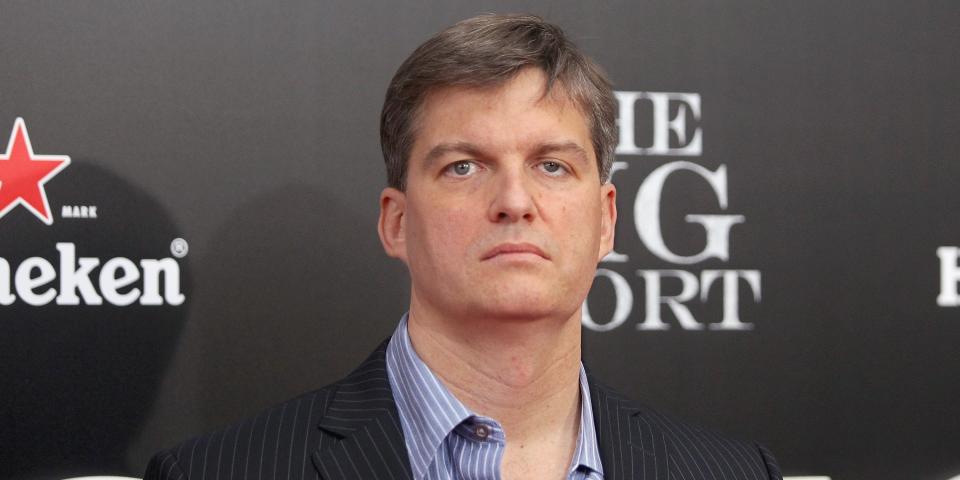
-
“Big Short” investor Michael Burry’s bearish stock bets earlier are paying off.
-
In the second quarter, his management fund Scion held put options on ETFs that track the S&P 500 and Nasdaq.
-
Since then, the S&P 500 has fallen about 8%, and the Nasdaq has tumbled 9%.
Michael Burry’s bearish equity bets earlier this year have proven correct as the S&P 500 and Nasdaq have sold off sharply.
His spot-on bets against subprime mortgages were portrayed in “The Big Short” and earned him a massive investor following.
On Friday, the S&P 500 entered correction territory, joining the Nasdaq after it made a similar move earlier this week.
By the end of the second quarter, his management fund Scion held put options on two exchange-traded funds — SPDR S&P 500 and Invesco QQQ — that track the major index funds.
Since then, the S&P 500 has fallen about 8%, and the Nasdaq has tumbled 9%.
Burry regularly rings the alarm on stocks. In recent years, the Scion chief has warned of a massive bubble, and once suggested that the S&P 500 would bottom out at around 1,900 points.
But he recently admitted to making a mistake this year. In late January, Burry tweeted the word “sell,” ahead of a bull-market run.
Correction: October 27, 2023 — An earlier version of this story was based on tweets that aren’t affiliated with Burry and references to them have been removed.
Read the original article on Business Insider

